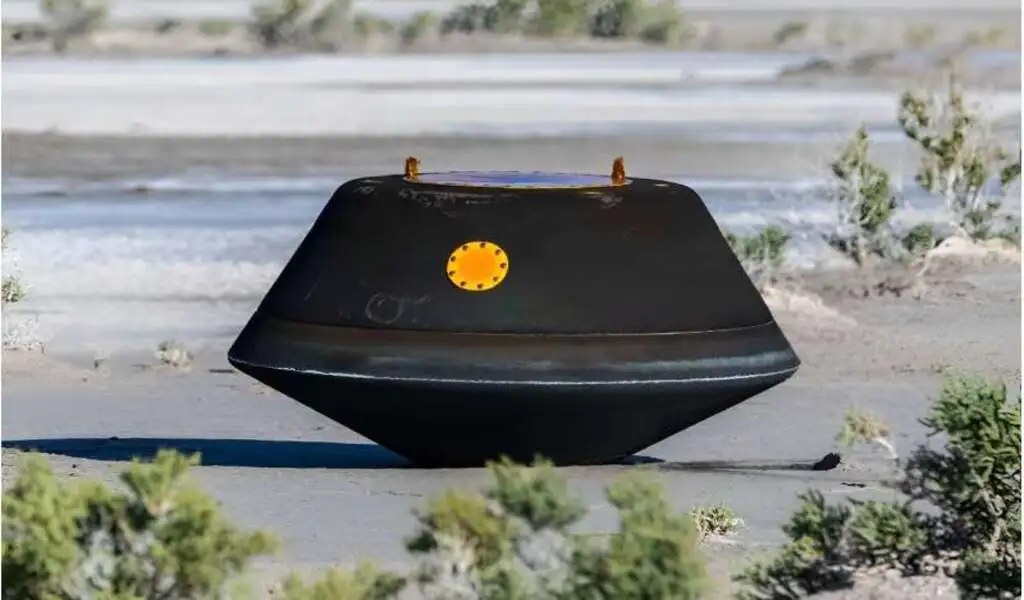Tech
A Historic Asteroid Will Be Featured In NASA’s First Images

(CTN News) – NASA is set to release the first images of the largest asteroid sample ever collected in space on Wednesday. Scientists hope will reveal clues about the origins of our solar system and perhaps the origins of life itself in its earliest stages.
During the OSIRIS-REx mission in 2020, the Mission collected rock and dust from the asteroid Bennu, and a capsule containing the precious cargo successfully returned to Earth a little over two weeks ago, landing in the desert of Utah.
In a specialized clean room at NASA’s Johnson Space Center in Houston, the samples are being analyzed painstakingly by a team of scientists.
There will be a live streamed news conference by the space agency at 11:00 am Eastern Time (1500 GMT) in which preliminary scientific analysis and photographs will be presented.
There is no scientific evidence to suggest that OSIRIS-REx was the first mission to rendezvous with an asteroid and return samples for study. Japan has succeeded in doing just that twice, returning bits of space pebbles in 2010 and 2020.
As a result, a substantial amount of material has been returned by the Hayabusa, 250 grams (half a pound) compared with 5.4 grams returned by Japan’s Hayabusa2.
The reason NASA chose to sample Bennu is that it is believed to be a rich source of organic compounds.
As early as billions of years ago, scientists have hypothesized that similar asteroids could have transported organic building blocks to Earth along with water as a result of collisions.
As Bennu’s orbit crosses with our planet’s, making the roundtrip journey easier than going to the Asteroid Belt, which is situated between Mars and Jupiter, is one of the reasons that Bennu’s orbit intersects with our planet’s.
NASA researchers have been encouraged by the discovery of “bonus particles” on the sample collector, which are described as black dust and debris.
When OSIRIS-REx shot nitrogen gas at Bennu in October 2020, a flap designed to seal the collector got wedged open with a piece of rock, allowing some of the finer material to escape.
According to deputy OSIRIS-REx curation lead Christopher Snead, “The best ‘problem’ to have is that there is so much material that it is taking longer than we expected to collect it.”
There is a lot of material there, and it is really impressive.”
A massive collision between one and two billion years ago is believed to have formed Bennu from fragments of a larger asteroid in the asteroid belt.
In the course of collecting data from the spacecraft, it was revealed that the particles making up the exterior of the spacecraft were so loosely packed that if a person stepped onto the surface, they might sink, much like stepping into a pit of plastic balls.
Moreover, a better understanding of Bennu’s composition may prove useful if humanity needs to steer it away in the future.
It is unlikely that it will hit the Earth through the mid 2100s, but between that time and the year 2300, the chances increase to around one in 1750.
SEE ALSO:
Exxon Buys Pioneer Energy For $60 Billion To Dominate US Oilfields




























